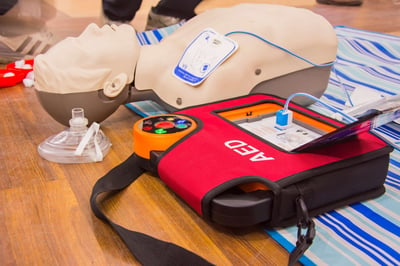Enhancing Cardiac Arrest Survival Rates in America: A Call to Action
 Despite the U.S. celebrating over six decades of Heart Month, sudden cardiac arrest remains a largely unaddressed threat, with over 350,000 Americans affected annually.
Despite the U.S. celebrating over six decades of Heart Month, sudden cardiac arrest remains a largely unaddressed threat, with over 350,000 Americans affected annually.
 Recent studies highlight a dire need for improvement, revealing that while 50% of cardiac arrest victims at schools and recreational facilities could potentially be saved by timely defibrillation, fewer than 20% receive this life-saving treatment.
Recent studies highlight a dire need for improvement, revealing that while 50% of cardiac arrest victims at schools and recreational facilities could potentially be saved by timely defibrillation, fewer than 20% receive this life-saving treatment.
As the nation grapples with these stats, efforts to remove barriers to Automated External Defibrillator (AED) access, such as the prohibitive costs associated with physician oversight required in nine states, are gaining traction.
Kentucky’s House Bill 22, which seeks to eliminate the physician oversight mandate, recently passed the House vote unopposed. This bill is a significant step towards reducing the costs and logistical hurdles associated with AED maintenance and training, thus potentially increasing AED deployment and use in critical situations.
The Good Samaritan law, ensuring limited liability for those using AEDs in emergencies, remains in place, providing additional confidence and protection for bystanders willing to assist.
However, legislative changes alone aren't enough to ensure a higher rate of AED use and CPR administration. Cultural shifts and increased training are crucial.
A survey in Florida showed that less than 65% of respondents felt likely to initiate CPR, mainly due to fears of injuring the patient.
This contrasts sharply with Sweden, where aggressive public training programs have raised CPR administration rates to 82% in cases of out-of-hospital cardiac arrests. Programs like Sweden’s SMS Lifesavers, which alert trained volunteers to nearby cardiac emergencies, exemplify innovative approaches that could be adapted in the U.S.
Further, the American Heart Association (AHA) has launched initiatives such as the Nation of Lifesavers campaign, led by Damar Hamlin, a Buffalo Bills safety and sudden cardiac arrest survivor.
This campaign aims to double survival rates by 2030 through increased CPR training and AED access. Hamlin’s involvement brings vital public attention to the cause, highlighting the potential for celebrities and influencers to significantly impact public health behaviors.
Senate Bill 1024, also known as the Access to AEDs Act, represents another critical legislative effort, proposing grants to help schools across the country equip themselves with AEDs and provide necessary training.
Damar Hamlin emphasized the importance of this bill, noting that "for schools that have AEDs, the survival rate for children from sudden cardiac arrest is seven times higher."
This underscores the need to integrate educational content into popular media and social platforms, which could significantly enhance public readiness to perform lifesaving interventions like CPR and AED use.
While America prides itself as the land of opportunity, it is crucial that this extends to the ability to save lives through improved education, legislative support, and community involvement in CPR and AED usage.
The ongoing efforts by lawmakers, Athletic Trainers, and advocates are commendable, but there is still much work to be done to ensure that when cardiac emergencies occur, bystanders are ready and able to act, transforming potential tragedies into stories of survival.
Read the doctor's full article here!
![HR Logo [Recovered]_Full Color Vertical-1](https://blog.healthyroster.com/hs-fs/hubfs/HR%20Logo%20%5BRecovered%5D_Full%20Color%20Vertical-1.png?width=199&height=178&name=HR%20Logo%20%5BRecovered%5D_Full%20Color%20Vertical-1.png)
 By
By


